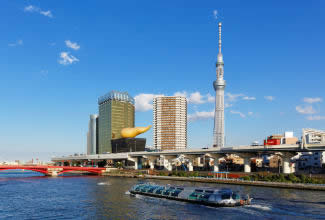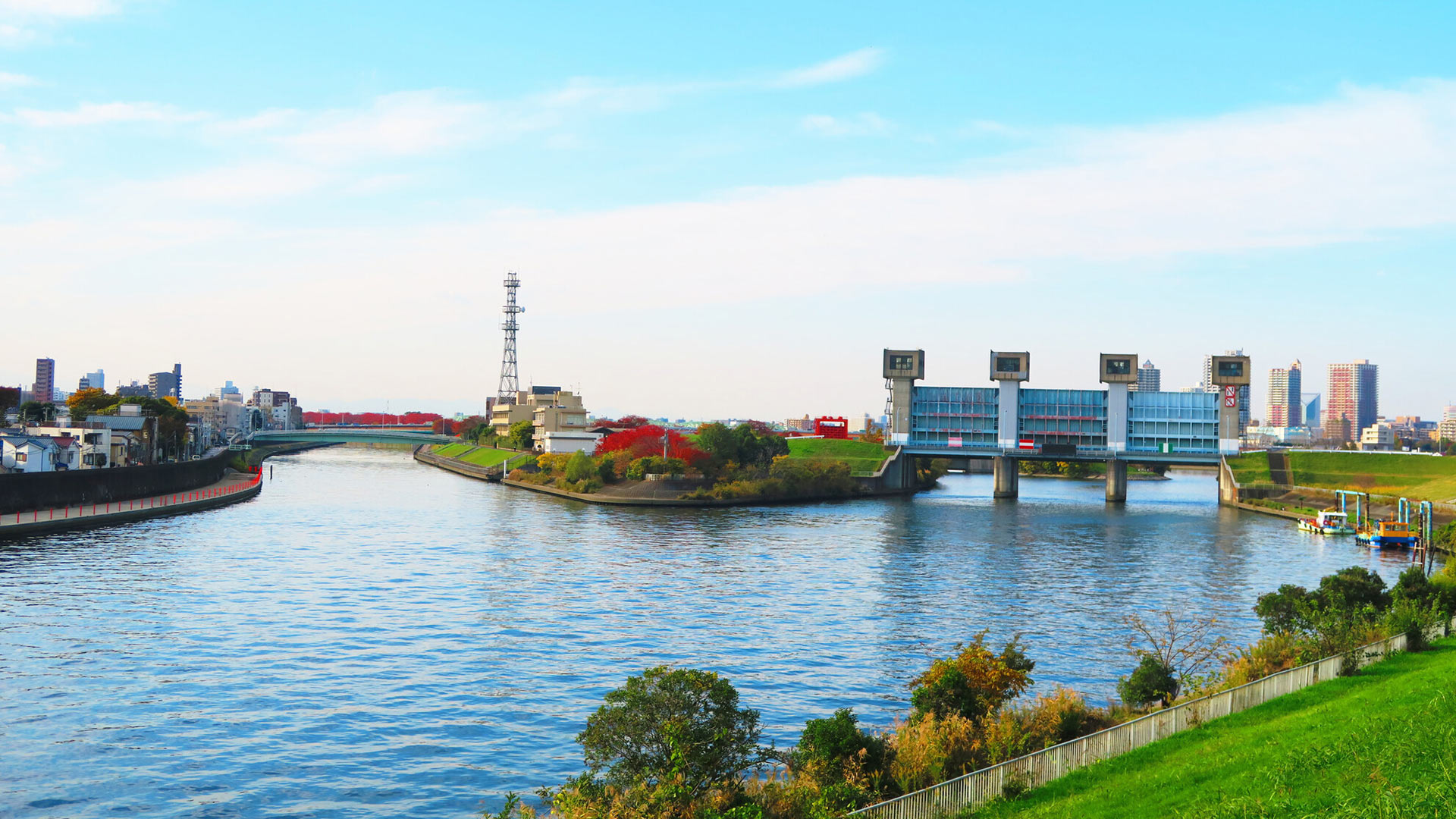
My Tokyo Guide
See something interesting? Click on the heart button in the article to add a page from this site to My Favorites.
Main content starts here.
Updated: November 13, 2023
The Arakawa (or “rough river”) flows 173 kilometers through Saitama Prefecture and into Tokyo Bay, and, along with the Tonegawa River, accounts for around 80% of Tokyo’s water supply. As its name suggests, it has repeatedly flooded over the years, and attempts have been made to control the flooding since the Edo period. After major flood damage in 1910, an artificial drainage channel was constructed from 1911-24, which became the Arakawa Floodway. At that time, authorities considered improving the Sumida River downstream of the Arakawa River, but due to the importance of transportation of goods and people by boat, they decided that the construction of the Arakawa Floodway would be more effective.
Tokyo is a city that has developed along with its waterways, and the Arakawa Floodway has continued to protect the people and property of the lower Arakawa Basin. As the Arakawa Floodway celebrates its 100th anniversary in 2024, it provides a fascinating place to visit. Learn about the history and culture of the Arakawa in an outdoor environment, surrounded by the water and green spaces.
Tips
- Compare the nostalgic charm of the old red flood gate with the current blue flood gate that replaced it
- Visit the Arakawa Museum of Aqua to learn more about the history and wildlife of the area
- Take a relaxing walk or bike ride, and have a barbeque in the Arakawa Iwabuchi Seki Green Space
Former Iwabuchi Flood Gate (Red Flood Gate)
The Former Iwabuchi Flood Gate was built over the course of eight years from 1916-24 as the cornerstone of the flood control plan. The construction was supervised by Akira Aoyama, who was also involved in the building of the Panama Canal. This reinforced concrete flood gate, with five 9m wide gates, was installed at the branch point between the Arakawa Floodway and the old river channel (now the Sumida River) to restrict the flow of flood water from the Arakawa River into the Sumida River.
It was repainted red during renovation work in the 1950s, and has been affectionately nicknamed the "Red Flood Gate" by the locals. Today, it no longer functions as a flood gate, and has been replaced by the blue Iwabuchi Flood Gate, which is located downstream. However, the Former Iwabuchi Flood Gate has been certified as a modern industrial heritage site by the Ministry of Economy, Trade and Industry.
Cross the bridge to visit the Akasuimon Green Space on a small sandbank called Nakanoshima. Here you’ll find “Shooting the Moon,” a sculpture by Tadashi Aono which won the Arakawa River Art Contest Grand Prize in 1996. It asks viewers to think about “the time when things with form disappear,” against the backdrop of the flowing river. There’s also a stone monument commemorating the Kusakari national grass cutting championships, which were held on the banks of the Arakawa from 1938-44. It’s a good place to take a break while cycling along the Arakawa cycling path.
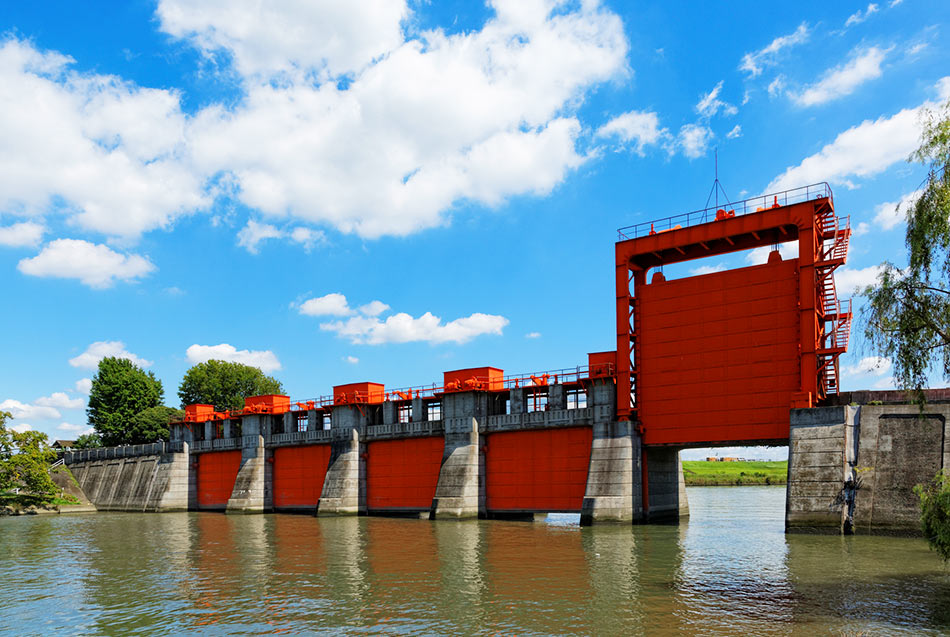
Iwabuchi Flood Gate (Blue Flood Gate)
In 1973, the flood management plans for the Arakawa River were revised and the height of the Former Flood Gate was deemed no longer sufficient. This led to the construction of the current Iwabuchi Flood Gate, 300 meters downstream. Completed in 1982, it has a robust structure with three gates 20m wide and 16m tall that can withstand a major flood that might occur once every 200 years. It’s commonly known as the “Blue Flood Gate” due to its color. It separates the Arakawa River from the Sumida River (which branches from the Arakawa at Iwabuchi). When the Arakawa River rises, the flood gate is closed to prevent flooding of the Sumida River Basin. It can withstand 1500 tons of water pressure.
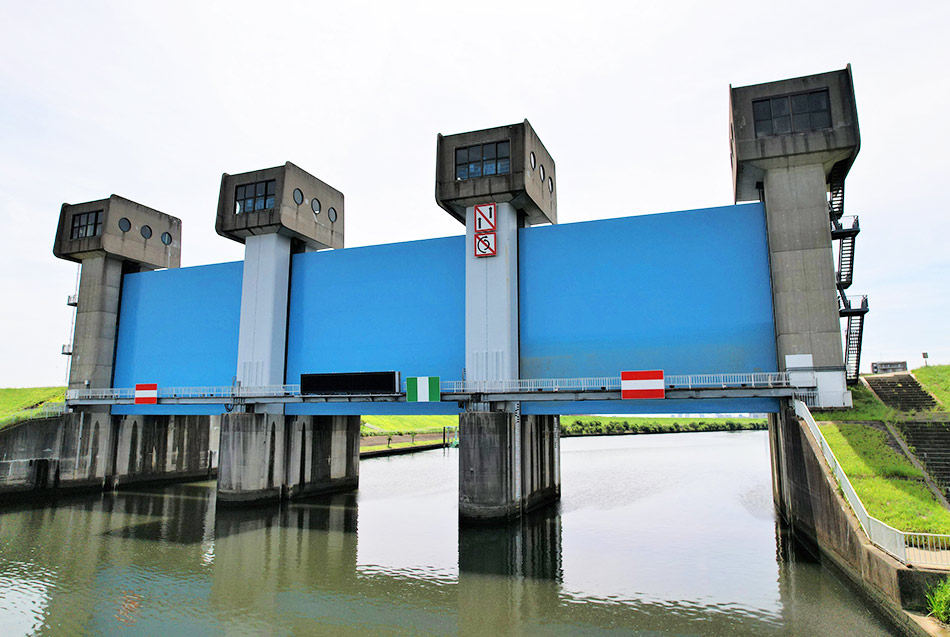
Arakawa Museum of Aqua (AMOA)
You can learn more about the history and wildlife of the Arakawa River and the surrounding area at the nearby museum, which opened in 1998. The Arakawa Museum of Aqua (AMOA) has exhibits on the history of the Arakawa, flood control projects, and the wildlife of the area. Admission is free.
The first floor focuses on the Arakawa Basin, with aerial maps, a 360° boat trip video, an aquarium corner, and an outdoor observation pond. The second floor is dedicated to the history of the Arakawa River and its flood control measures, and also includes a theater room and space for temporary exhibitions. The third floor has a terrace which looks out over the Arakawa River and Iwabuchi flood gates, as well as a community space and library for reading and studying. There’s also an outdoor model of a section of the Arakawa, which shows how the water gates work with the flow of the river.
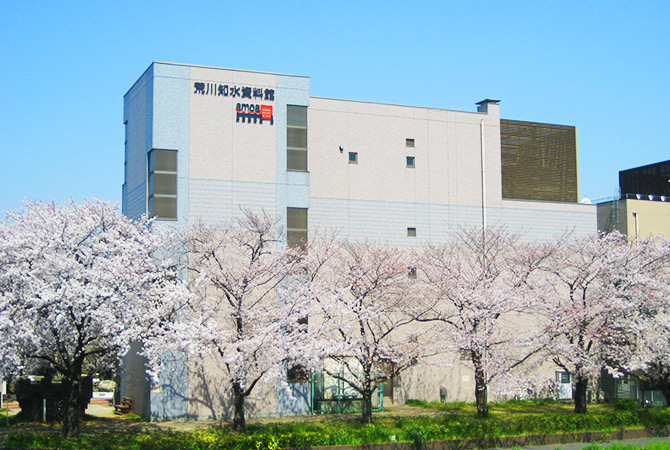
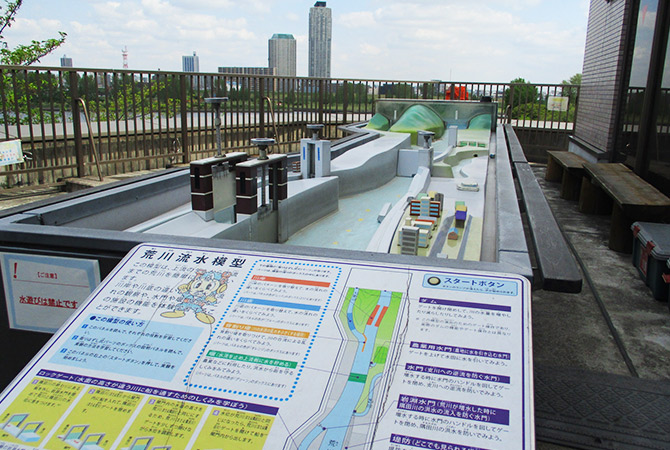
Arakawa Iwabuchi Seki Green Space
The Arakawa Iwabuchi Seki Green Space is a park area that was built on the Arakawa riverbed in between the main Arakawa River and its Shingashi tributary. Play in the outdoor environment, appreciate the surrounding scenery, and relax in the sunshine while feeling the refreshing breeze of the river.
It’s a good place to go for a walk or bike ride. There’s also a BBQ space, where you can enjoy your food while looking out at the red flood gate. In the spring it’s a great spot for cherry blossom viewing.
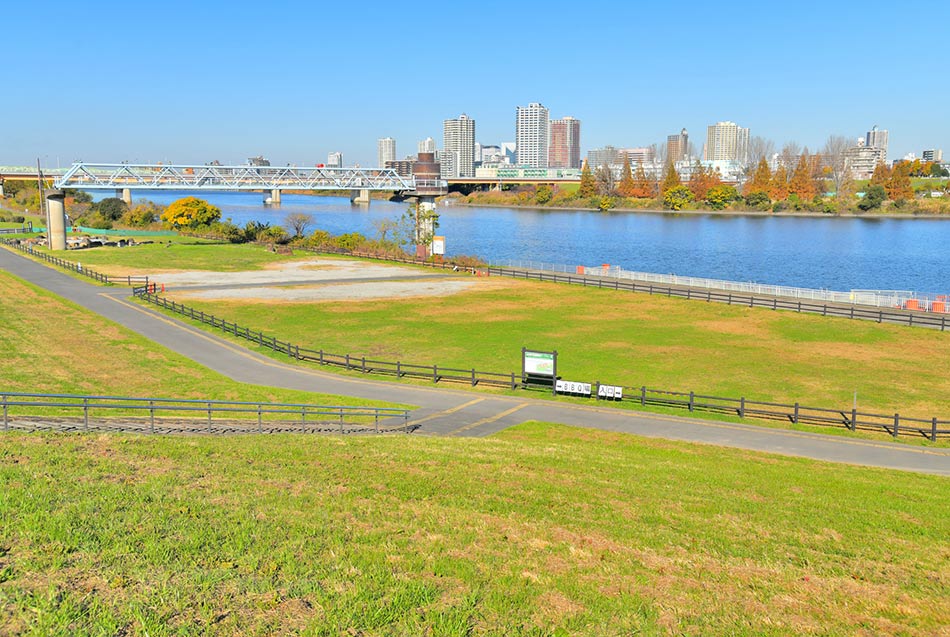
Reference Link
- Visit Tokyo >
- Tokyo Area Guide >
- Waterfront >
- Tracing the history of the Arakawa Floodway

